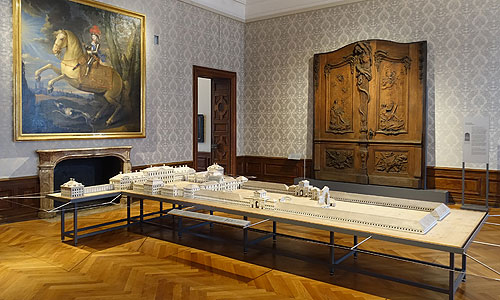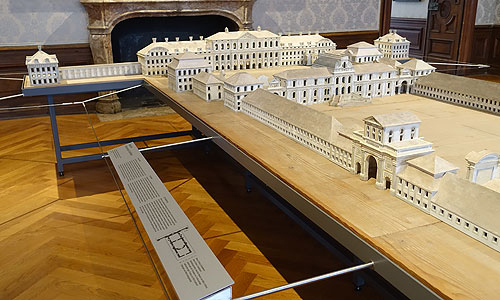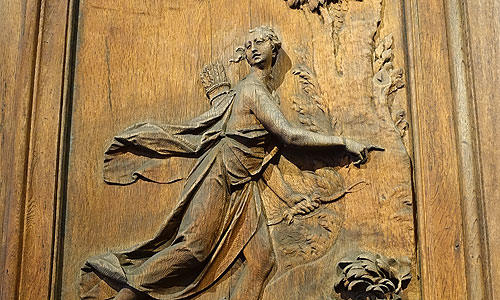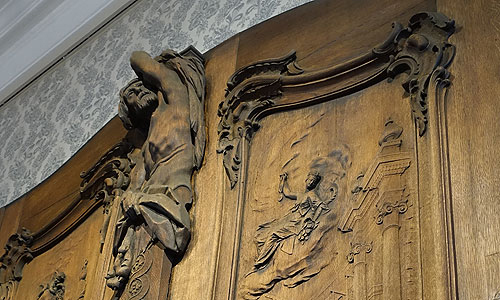Main information:
Schleißheim New Palace
Palace model and palace portals
This room shows outstanding works of art connected with the building history of Schleissheim Palace. The impressive wooden model of the palace dating from 1725 illustrates the ambitious plans of Elector Max Emanuel (reigned 1680-1726) for his residence in Schleissheim. It represents a late stage in the project, when the already completed New Palace would be connected with the Renaissance Old Palace, now redesigned in the Baroque style, to create a four-winged complex. However, this very large extension was never built.
The two massive oak portals of the New Palace were added by Elector Max III Joseph (reigned 1745-1777) in 1763 and made by Ignaz Günther, one of the most important sculptors of the Rococo age. The main portal of the palace combines an allegory of the arts with glorification of the ruler. The portal leading to the park features references to the Baroque garden and hunting as elements of court life connected with the palace.
To protect Ignaz Günther’s masterpieces from weather damage, the Bavarian Palace Administration had them replaced in 2018 with painstakingly made copies. The original door wings are displayed here in a safer indoor climate.
The portraits of the court architect Joseph Effner and his wife Maria-Magdalena, painted in around 1720/21 by Effner's fellow-artist at Schleißheim, Jacopo Amigoni, were purchased by the Bavarian Palace Administration with the support of the Cultural Foundation of the German States and the Ernst von Siemens Art Foundation.






Recommendation in the social media
Facebook Twitter Google Plus